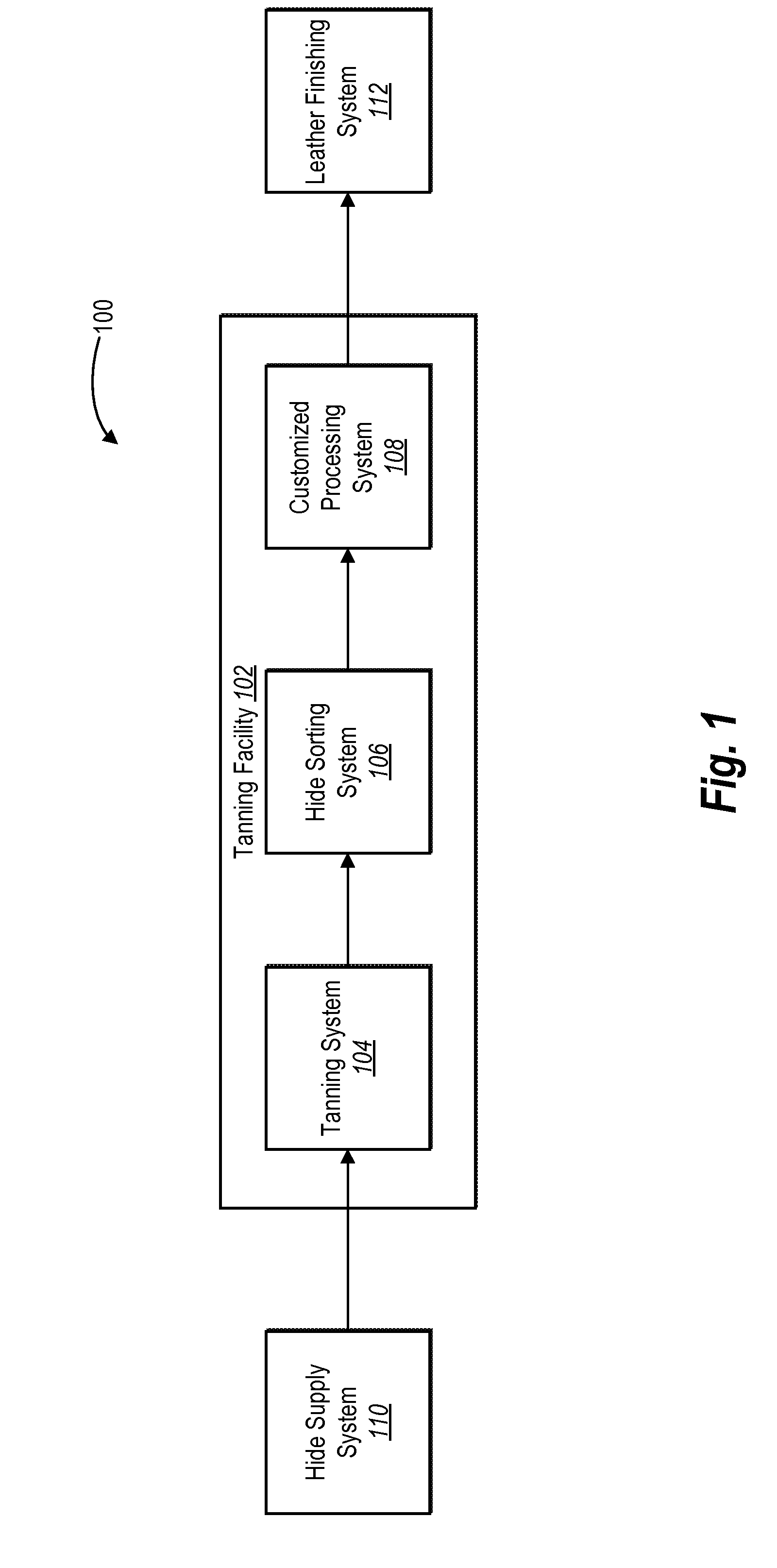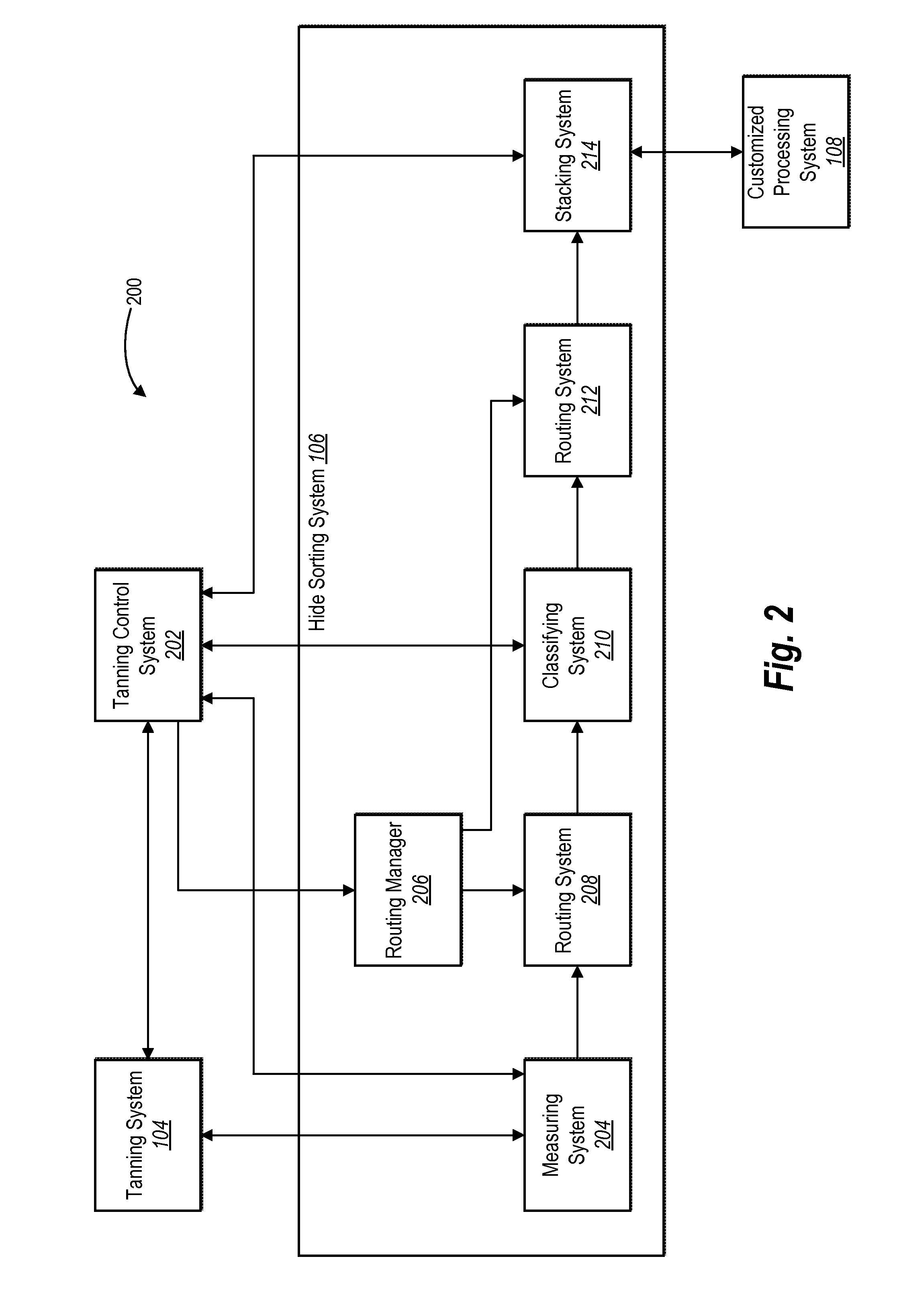Hide sorting systems and methods
a sorting system and hide technology, applied in the field of hide sorting systems and methods, can solve the problems of lack of traceability of information relating to various activities, lack of processing the inability of conventional tanning processes to record process information for a particular hide or a particular batch of hides, etc., to improve the sorting of hides, enhance the traceability of hides, and improve the processing of hides
- Summary
- Abstract
- Description
- Claims
- Application Information
AI Technical Summary
Benefits of technology
Problems solved by technology
Method used
Image
Examples
Embodiment Construction
[0024]One or more embodiments include a tanning control system that enhances the traceability of hides throughout the packaging process. For example, a tanning control system can control various systems in a manner that enhances traceability, on an individual hide level, by capturing information related to one or more processes of a hide sorting system. For instance, a tanning control system can generate a unique hide identifier for each hide and associate the hide identifier with data corresponding to one or more processes of a hide sorting system (e.g., unique identifiers for a particular sammying machine, weight scale, conveyor systems, grading machine, folding device, and pallet used to package the hide). Thus, by capturing and tracking information related to the activities performed in a tanning facility, example embodiments of a tanning control system can facilitate troubleshooting defects and other problems associated with processing hides, and thereby provide improved consis...
PUM
| Property | Measurement | Unit |
|---|---|---|
| flexibility | aaaaa | aaaaa |
| structure | aaaaa | aaaaa |
| temperature | aaaaa | aaaaa |
Abstract
Description
Claims
Application Information
 Login to View More
Login to View More - R&D
- Intellectual Property
- Life Sciences
- Materials
- Tech Scout
- Unparalleled Data Quality
- Higher Quality Content
- 60% Fewer Hallucinations
Browse by: Latest US Patents, China's latest patents, Technical Efficacy Thesaurus, Application Domain, Technology Topic, Popular Technical Reports.
© 2025 PatSnap. All rights reserved.Legal|Privacy policy|Modern Slavery Act Transparency Statement|Sitemap|About US| Contact US: help@patsnap.com



